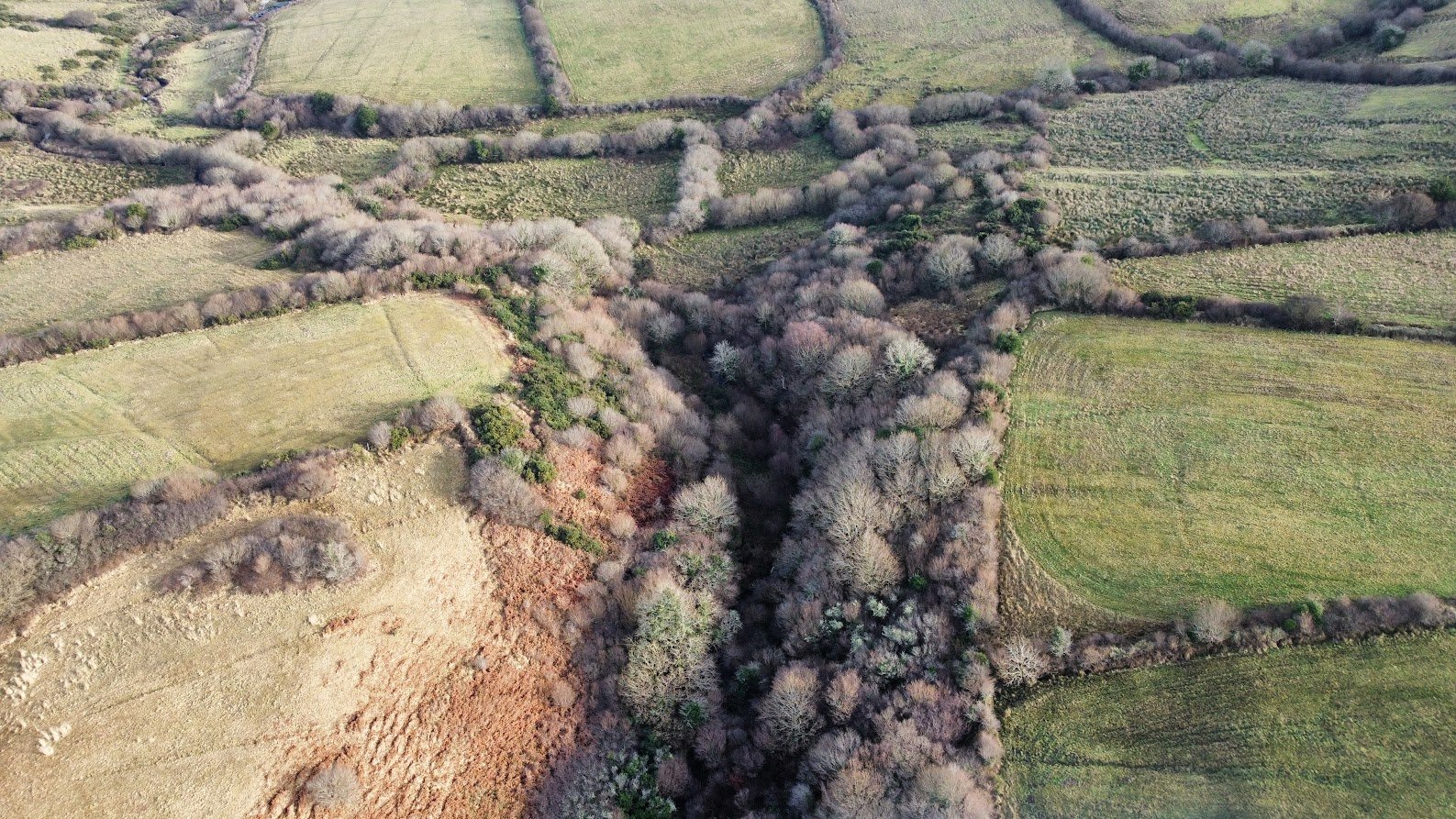A Golden Age of Woodland Restoration May Be Ahead of Us… But It Won’t All Be Plain Sailing
The woodland in this West Clare river valley is now expanding, due to the less livestock grazing pressure.
Originally published in the Irish Examiner on 27th September, 2023.
Whilst our official forestry programme hangs in the balance, our wild native woodlands are expanding quickly, writes Ray Ó Foghlú, Hometree’s Project Lead on the Wild Atlantic Rainforest Project and Farm Programmes Coordinator.
Ireland’s national tree planting schemes are in trouble. Last year just 2,000 hectares of forest were planted from a target of 8,000 hectares. Licencing issues, environmental court challenges, and disease concerns have left the sector reeling.
However recent data from Tailte Eireann, and the National Forest Inventory (NFI) suggests overall tree-cover in Ireland continues to grow, aided by the natural expansion of wild trees. The NFI states that Irelands forest area grew by 38,328 hectares between 2017 and 2022, yet only 19,819 hectares of land was actually planted during this period. The remaining 19,009 hectares, dominated by pioneer species such as birch and willow, can only be explained by the reproduction of wild trees, a process known as natural regeneration.
Tailte Eireann’s recently released landcover maps suggest that whilst Ireland’s broadleaf forest-cover remains low at 2.42% of land area, transitional (new) forests now represent 5.46%. Tree cover in the form of native woodlands, commercial forestry, transitional forests, and hedgerows now make up 17% of Ireland’s total land area.
Woodland expansion is a passive phenomenon - it happens when humans do nothing. And increasingly, that’s what we are doing. We’re more affluent, less rural, and less engaged with the land.
Our western uplands would look very different if it were not for unrrstricted sheep grazing, as evidenced by this lake Island in Kerry.
Breaking the link: reduction in farmed land
Traditionally, agriculture-based societies limited the spread of wild trees as there was a link between the area of land farmed and the population’s ability to feed themselves or engage in trade.
As the 20th century progressed modernisation saw countries focus on their natural competitive advantages. Agricultural production was streamlined and increasingly focused on the best land, with shortfalls made up through cheap imports.
The result was a gradual withdrawal from the more difficult-to-farm parts of the landscape. The “wilding” process which followed has seen millions of acres of secondary forest recover in northeastern USA, western Europe and Japan.
This phenomenon was held at bay in Ireland using European agricultural subsidies which incentivised high livestock numbers and open spaces on the landscape. However, as of last January, these subsidies have concluded.
As the majority of Irish Farms (primarily small beef and sheep enterprises) are loss-making when subsidies are excluded, there is no longer an incentive to keep land clear. If acres fall out of production, farm income (already a secondary or even tertiary income) is likely to stay the same. The link is now severed.
Wild woodlands of birch and willow march up this south Kerry hillside.
It’s not just policy: change in land use
Rural demographics also give clues to our future landscape composition. Labour was required to clear the wild woodlands, and labour will be required to keep them at bay. Farmers are now older (average age is 56) and many have no apparent successor.
Additionally, many of them work off-farm, and have less time to give to non-essential farm tasks. Whilst automation of farm work will play a role, it will be confined to flatter ground, leaving steep, awkward, or difficult to access ground revert to woodland.
As they have elsewhere, Irish farm systems have simplified. Here in west Clare, there are really just suckler cows. Unlike sheep or goats there are places cows won’t go, and things they won’t eat. They also spend half the year inside, giving hardy trees and shrubs a chance to establish.
The list of reasons to believe our woodlands will make a comeback goes on; we no longer depend on wild trees for wood-fuel, land is increasingly falling into non-farmer ownership (new owners lack the inclination or the ability to control large areas of land), and thousands of acres of recently abandoned bog are being actively colonised by wild birch and willow.
Rhodendron Ponticum, seen here cloaking a hillside on Beara, is a real threat in abandoned landscapes.
Benefits and drawbacks
The return of these forests can be seen as a good thing. They will become a significant carbon store, as well as repositories of rich biodiversity. On mainland Europe they are facilitating the return of apex predators, including wolves and bears. Whilst these species won’t be seen in Ireland anytime soon, our native woodlands remain amongst the most ecologically diverse on the continent.
There will however be losers in the transition to a more forested country. Unstructured “rewilding” carries with it significant social and ecological ramifications. Natural regeneration is most likely to occur in Ireland’s most marginal farms. These farms host some of our rarest species-rich grasslands, ground nesting birds, and pollinators, all major conservation concerns. In these places, colonisation by trees can result in a reduction in biodiversity.
Furthermore, it can’t be taken for granted that native trees and plants fill the vacuum left when humans pull back. Invasive plant species such as Rhododendron ponticum will happily take advantage, as will unregulated populations of wild or trespassing herbivores, both leading to dysfunctional low-diversity habitats.
Finally, the human communities that live in these areas will be impacted and should have a say in the process. Given that these woodlands could contribute to important national strategic goals, there should be a structure in place to support and, where appropriate, reward the relevant landowners.
It’s simply not good enough for the state to oversee this abandonment, when a more considered transition, one which delivers for people and nature, is possible.
Ancient woodlands may once again expand out onto the landscape.





